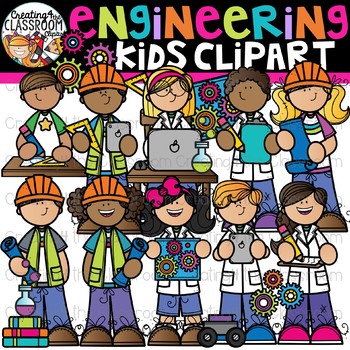Using Technology to Teach and Learn
Here is a project I did that disuses the benefits of using technology and computer programs to teach students with ADHD, other attention disorders, and regular students as well. In this project I discuss the benefits of using technology and computer programs to teach literacy, but it works across all subjects and fields for both children and adults. Technology is forever changing; these computer programs for example started as early as the 1980's. I am not sure about you, but I imagine that the computer programs of the 80's are much different than now. I can only imagine what they will look like 10, 20, 30, or 40 years from now. Remember the 80's were 20/30 years ago. Picture how much technology has changed since then and imagine now, after that short amount of time, what it will be like in the future.
- According to the CDC, in 2016, 6.1 million kids have had ADHD at some point. There is a steady incline
- Average age of diagnosis; 7
- 6.1% of American children are being treated for ADHD using medication
- There has been a 42% increase in ADHD in the past 8 years
- Males are 3 times as likely to be diagnosed with ADHD than females (possibly why more males may have a more difficult time reading than females)
- A child with ADHD is more likely to experience other conditions such as learning disabilities, anxiety, and depression.
- 80% of students with ADHD have learning problems, 20-30% are classified as “learning disabled”
- Children with ADHD tend to struggle with literacy skills
Symptoms:
- Difficulty paying attention to tasks such as remaining focused during lessons, conversations, or lengthy reading
- Easily distracted by other things, including unrelated thoughts
- Not listening when spoken to directly, their mind seems elsewhere, even in the absence of obvious distraction
- Forgetful, often losing/misplacing belongings such eyeglasses, paperwork, school supplies, etc...
- Lacking organizational skills such as having messy work and having disorganized personal spaces
- Difficulty sitting still, often moving around a room or shuffling/fidgeting in their seat.
- Careless mistakes and lacks attention to details in work
- Fails to follow through on tasks such as chores or schoolwork; starts tasks but quickly loses focus and becoming sidetracked
FAST Forword Program:
Fast Forword is a computer-based program designed by neuroscientists, used to target the underlying literacy struggles. Fast Forword suggests that struggling readers need 10-30 times the amount of reading. The program claims to provide more practice opportunities than any other reading intervention program. Practices are unique to each learner, based on their needs.
Results:
"Statistically significant improvements were demonstrated for nearly 98 percent of the children who completed the training," said Ms. Rhelda Ball, Principal of Cornelius Elementary School. "On average, this group moved from the 13th percentile to almost the 50th percentile in these skills. Some of the children returned after the summer and reported that they are now reading because of the program. We found that Fast Forword enables children with language and reading problems to begin to process information more quickly, so that the barriers that prevented them from becoming good readers come down."
Electronic Storybooks:
Online books, or Ebooks are stories that are comprised of the traditional book format, but have added multimedia sensory features like sound effects, audio narration, and animated illustrations. The books also used highlighted text to help struggling readers. Electronic storybooks represent choice in the Reading Volume Program, and it represents a read aloud, since it is read to them. Electronic storybooks come in the form of a physical book, or a book published online. The teacher may ask the student motivational questions like if they liked the book, how it relates to them, or if they would recommend the book to others. This would allow book talks, to encourage the reader to read outside of the classroom (RVP). An Electronic book be treated just as any other book, but children have access to it at all times, as long as there is a computer available.
Results:
“This study has shown that online reading software, motivational aspects, and constructivist methods of instruction can promote reading motivation among beginning readers. Of particular importance was the effectiveness of these programs in decreasing off-task behaviors and increasing sustained levels of attention, competence and engagement for three students who had reading and attention difficulties during the components of their classroom's reading program.” Decreasing off task behavior is a benefit for children with ADHD, because they often lose attention, and can show these behaviors.
How can this be implemented?
In the classroom setting, computer-based learning strategy would best be implemented during centers and during quiet reading times, as the children can use headphones. All students would have access to it, and it would benefit all students, both with and without ADHD. This computer-based learning strategy can also be implemented in a home setting since parents can log in to the program at home whenever they want. The convenience of these programs is what makes them so viable in the everyday lives of children, especially for busy schedules where a parent/teacher cannot devote all their time to a single child. As long as the student has access to a computer, they will have access to reading programs (Reading Volume Program) and electronic storybooks. By getting students motivated to read they will not only enjoy it, but develop the skills needed to succeed. Having fun, interactive methods of learning is one way to help all students become motivated, especially those with ADHD. By introducing and implementing various ways of teaching and presenting material, parents and teachers can put their students/children on a path toward success.
Citations:
C., J., & G. (2004, November 30). The Effects of Computerized Reading Instruction on the Academic Performance of Students Identified with ADHD. Retrieved from https://eric.ed.gov/?id=EJ788202
Ciampa,K (2012) Electronic storybooks: a constructivist approach to improving reading motivation in grade 1 students. Canadian Journal of Education. 35.4 http://www.csse-scee.ca/about/
Erickson, J. D., & Wharton-Mcdonald, R. (2018). Fostering Autonomous questions Motivation and Early Literacy Skills. The Reading Teacher. doi:10.1002/trtr.1750
Fisher, D., & Frey, N. (2018). Raise Reading Volume Through Access, Choice, Discussion, and Book Talks. The Reading Teacher, 72(1), 89-97. doi:10.1002/trtr.1691
Imfeld, C. (1999.). PR Newswire. Encyclopedia of Public Relations. doi:10.4135/9781412952545.n322
Online sources:
Attention-Deficit / Hyperactivity Disorder (ADHD). (2018, September 21). Retrieved from https://www.cdc.gov/ncbddd/adhd/data.html
ADHD by the Numbers: Facts, Statistics, and You. (n.d.). Retrieved from
Fast ForWord for Elementary. (2018, May 09). Retrieved from https://www.scilearn.com/products/fast-forword/elementary
Headsprout Grows Kids' Reading Skills! (n.d.). Retrieved from



